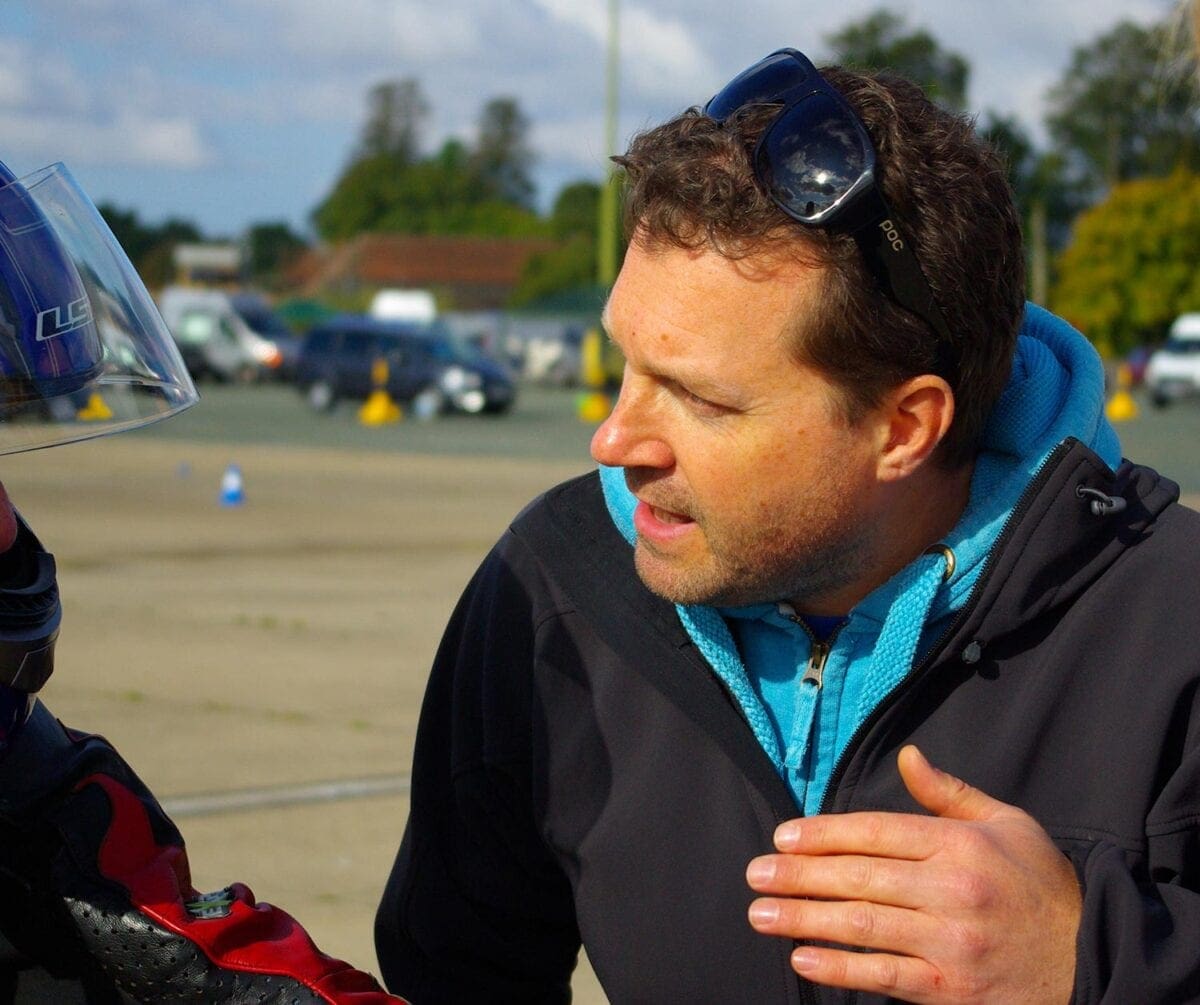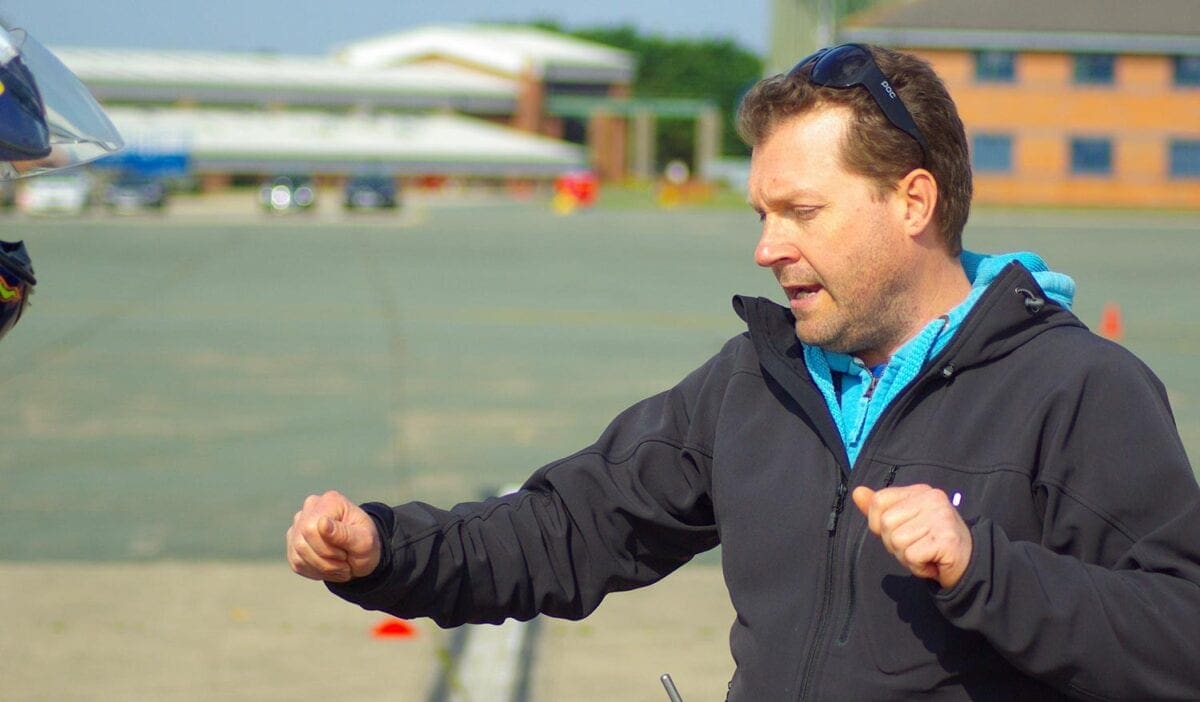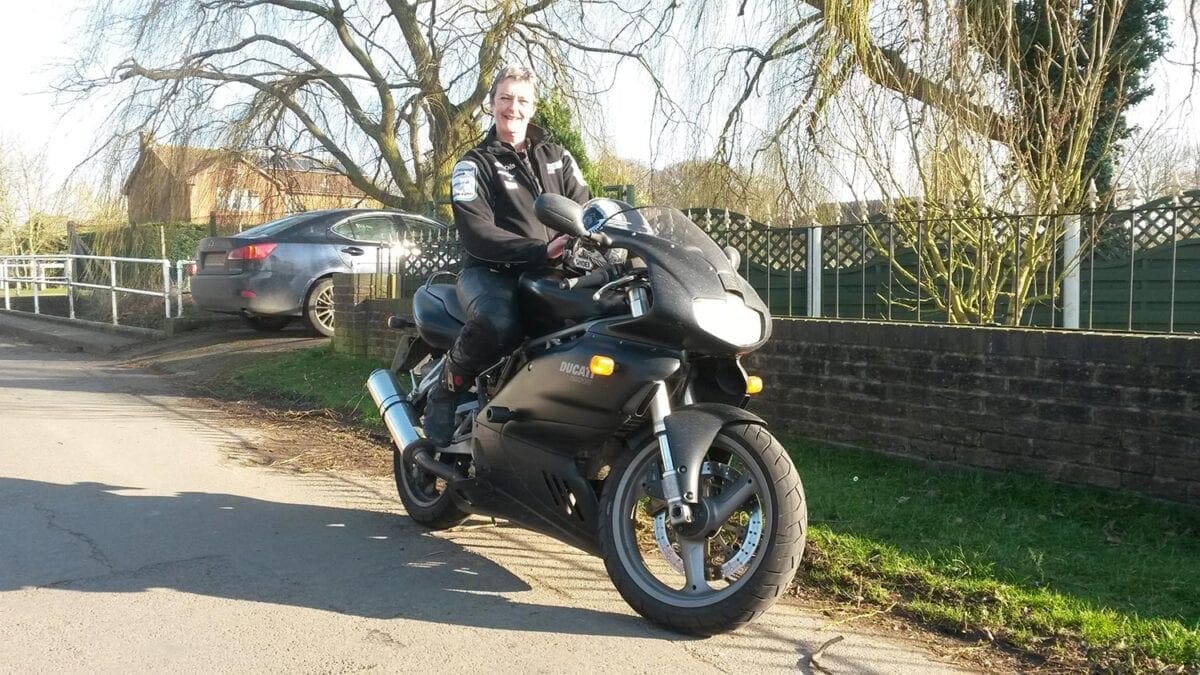Ever had a mental block about an aspect of your riding and wondered how to get over it? Meet psychological coach, Simon Darnton, who may be able to help…
“It’s all about rhythm” says Simon Darnton when asked what’s the most common theme that he works on with riders. He’s a psychological coach and before you scroll down the page, he’s not going to start telling you how to live your life, or how to ride your bike…
“A lot of people think its therapy – it’s not. I work with riders and racers who are highly functioning, so they can utilise and unfold their potential even further by using effective mental strategies.”
Starting off as an interest, Simon began working with riders in 2001 when he became involved with the Californian Superbike School. Since then, he’s helped racers dealing with psychological blocks and enabled them to better themselves on track, making a positive difference to their lap times.
“Riders are often frustrated with themselves – they have the top mechanics, the top bike and they’ve looked closely at the telematics of the machine, but there’s still something that’s not clicking. I’d say it’s becoming more accepted that riders value psychological work – not just on the track, but road riders too.”
Not everyone is accepting though, with some riders being dubious about having their weaknesses exposed. “Admitting they have a problem isn’t what riders – especially racers – usually do, plus they’re nervous that when they start talking about their inner experiences, I’ll think they’re bonkers – which isn’t the case. I’m not there to be judgemental, but people can be too judgemental of themselves. To put it bluntly, teaching them not to be their own worst enemy is a good place to start.”
How are these skills relevant for road riders? “Both road riders and racers are often looking for the same type of fulfilment from riding. I think it comes from being on the edge and having that extra bit of risk in their lives – it’s just racers are further along the continuum than road riders because tracks are the best place to push themselves.”
“On the road, you’ve got unpredictable surfaces; other road users and everything coming at you – that means your main focus isn’t having the throttle open all the time. You have to have a great margin of error – a very particular state of mind. A relaxed, clear and alert head is the best bet.”
To find out more about Simon and his work, visit his website at: www.simondarnton.com
Three tips for motorcycle road riders
- Relax – mentally and physically: Sit somewhere quiet and undisturbed, and get used to breathing. Focus on just one sensation – such as the rising and the falling of your chest – and you’ll find yourself relaxing. If thoughts intrude then let them float away. MotoGP rider Jorge Lorenzo uses a mediation technique like this to focus. Do it before going on a ride, but with your helmet on – you’ll feel increasingly focused.
- Learn to breathe properly: Sounds bonkers, but it’s important. When you tense up, you stop breathing which prevents your mind and body from working properly. Breathe deeply and from the diaphragm – it can take practice.
- Develop your visual awareness:We have two parts to our vision: central vision – where we’re looking; and peripheral vision – which manages our spatial awareness. We also have mental attention and awareness. Even when you’re looking where you want to go, your mental attention may be distracted towards, for example, the edge of the road. As a result many riders can find their attention switching between one thing and another which means they don’t flow around corners. Riders need to learn to develop awareness and trust in their peripheral vision, balancing this with their focus of attention and central vision. Attention and central vision draw you to where you want to go and peripheral vision manages you through space to get you there.
Reader’s ruts
We wanted to put Simon’s advice to the test, and asked one of our readers to tell us about their riding hang-ups…
Julie Smith from South Yorkshire emailed us: “I passed my test 10 years ago and love biking, but I have a mental block about corners. It began on my direct access course – when approaching a corner I came off gas. I can hear my father when teaching me to drive saying ‘always expect the unexpected when you can’t see, and only drive as fast as you can stop’. My instructor didn’t actually give me any useful comments other than to say through the one-way intercom: ‘It’s only a corner Julie’, which has stuck with me.
“I’m pretty confident and have done a day at Silverstone driving all the fast cars, so I know I can do it on four wheels. I know the theory too – positioning of the bike, body positioning, counter steering – all down to the position of my head. But it won’t all come together because I think I now over-concentrate.
“If I have a physical line to follow, I corner well – but in open flat areas I tend to be off-line. I get out of biking what I want but I don’t flow – I want to be able to ride better even on roads I don’t know.”
Simon’s advice: “It seems that you are literally lost in space because when you have something well defined guiding you around the corner, you’re OK.
“I’d suggest that you create your own guide. Ride towards the corner at a comfortable speed, and as you approach imagine that there’s a line drawn through the corner that represents the line you want to follow. Follow this imaginary line and let your eyes be drawn ahead of you along it, pulling you through the corner. Don’t worry about what the line looks like, or whether it’s right, just try to be aware of how it influences your sense of flow. Elite racers all see lines through the corners which helps them to achieve their flow. Try laying down similar imaginary lines through all your corners to improve your flow.”
We caught up with Julie a few months after to see how she was getting on. “As soon as I received Simon’s feedback I went out on the bike that evening and felt more confident with the lines, and a lot smoother – at times I do think I was flowing. I stuck to a speed I was comfortable with and imagined a mental laser line around the bend. I can’t say I’ve got it 100% right, but it has definitely helped me improve. Two people I ride out with on a regular basis have commented separately about my riding since I’ve adopted the method, which is good as they must have seen a big difference. I come back from rides feeling more in control, and enjoying knowing I’m conquering the bends. In time I’m sure that it will become a natural part of my riding.”







